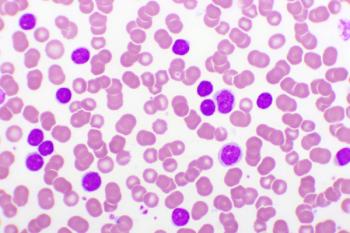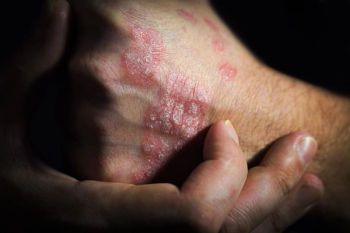
GLP-1s Support Weight Loss, Symptom Relief in Psoriasis, Hidradenitis Suppurativa
Experts at the Skin of Color Update highlighted the potential benefits of GLP-1 RAs in managing obesity, as well as psoriasis and hidradenitis suppurativa symptom management.
Panelists discussed the connections between obesity, inflammation, and
The panel, “Addressing Comorbidities in Dermatologic Disorders: Spotlight on Psoriasis and Hidradenitis Suppurativa—An Expert Discussion on Multidisciplinary Approaches Including the Potential Role of GLP-1 Agonists,” featured Jennifer Soung, MD, and Karan Lal, DO. Throughout the discussion, they explored how GLP-1 RAs may help reduce the disease burden of psoriasis and hidradenitis suppurativa (HS), with Soung focusing on psoriasis and Lal on HS.
Understanding the Link Between Obesity and Inflammatory Skin Disease
Soung opened the discussion by defining obesity as an increase in adipose tissue that is associated with health risks like hypertension, diabetes, and cardiovascular disease. She added that other definitions recognize it as a chronic disease influenced by metabolic, genetic, and biological factors.
As for the connection between obesity and psoriasis, Soung explained that they share common inflammatory pathways. Both conditions are characterized by chronic low-grade inflammation, and they often coexist with comorbidities such as cardiovascular disease, diabetes, kidney disease, hepatic disease, and fatty liver. She added that adipose tissue is not simply a storage molecule but an active endocrine organ, releasing numerous cytokines that amplify systemic and cutaneous inflammation in psoriasis.
The link between obesity and psoriatic arthritis is even clearer: the higher the body mass index (BMI), the higher the risk of psoriatic arthritis; those with the disease have more systemic inflammation.
Evidence shows that patients who are obese and have psoriasis may experience a greater disease burden and exhibit lower responses to certain biologic therapies. In these patients, obesity or high BMI influences the longevity of their treatment response.
Lal expanded on this topic, noting that biologic treatment failures are complicated by a lack of weight-based dosing. Since most medications are administered in standardized doses regardless of weight, he hypothesized that the amount of free drug circulating in the system is very different for someone with a normal vs an elevated BMI.
As for HS, Lal considers it a much more complicated disease, in which obesity plays a big role. Because many patients have a follicular phenotype of HS, it is often missed and diagnosed as folliculitis. Additionally, HS is common in those with darker skin tones and who are obese.
Lal noted that treating HS is very different than treating psoriasis, as he often starts by managing all the factors he cannot see. Consequently, the first visit includes discussing obesity with patients, screening for diabetes, and checking for hypertension. He noted that many patients are not doing this regularly since they do not see primary care providers; because patients care more about the disease they can see, Lal said dermatologists often become that primary care figure.
Patient-Centered Discussions on Weight and Skin Health
The conversation then turned to the best way to address the relationship between obesity and inflammatory skin diseases with patients. Soung noted that this topic could be very personal for them, so it must be approached carefully. She encouraged providers to start by expressing their concern that the patients’ weight may be impacting their skin or treatment response. Then, they should ask permission to talk about the patients' weight.
“I find that if you give the patient the power to make that decision, and you’re asking for permission, they’re a lot more excited,” Soung said.
Due to the social stigma surrounding obesity, Soung added that she often uses the terms weight and weight management instead, claiming that patients feel less ashamed discussing the topic in this manner. Lal added that he discusses his own experience with patients to put them on an equal footing.
“...I’ve been obese my whole life, so I share with people my story, my journey, because I think it sets a level playing field,” he said. “…I can tell you, when I was 300 pounds and people would tell me about diet and all these things, it’s the kind of thing that you know already, but it’s hard to implement depending on what you’re doing in your life. Luckily, we have drugs that can help now.”
GLP-1 RAs and Their Impact on Inflammatory Skin Diseases
Pivoting to GLP-1 RAs, Soung explained that they both decrease appetite and food cravings and are very different from the weight loss drugs of the past in terms of how they work, the fact that they most likely increase metabolism, and how much weight patients can lose.
Before the invention of GLP-1 RAs, she noted that patients could not lose more than 10% of their body weight unless a bariatric surgery was performed. With these new treatments, patients can lose more than 10% of their body weight and reverse some cardiometabolic markers, like hypertension, diabetes, and fatty liver.
Beyond weight loss, researchers are exploring whether GLP-1 RAs have a direct anti-inflammatory effect. At the molecular level, GLP-1 receptors are found on certain immune cell subpopulations, including regulatory T cells, which play a role in regulating inflammation. Also, the weight loss achieved with GLP-1 RAs can improve patient quality of life and reduce cardiovascular risk factors, which may in turn lower the risk of developing psoriatic arthritis, causing a subsequent decreased risk or prevention of the onset of psoriatic arthritis.
Lal highlighted early data on GLP-1 RAs in HS, including small studies and case reports showing improvements in weight, laboratory markers, and disease severity. He emphasized that the impact of GLP-1 RAs on these patients extends beyond their skin, significantly improving overall well-being and quality of life.
Focusing on Patient Well-Being
When seeing patients after losing weight on a GLP-1 RA, Soung noted that she often asks what they love most about it or how they are feeling now.
“Sometimes, patients will say, ‘It’s amazing, I don’t have to take my diabetes or my high blood pressure medicines anymore,’” she said. “Other days, they just say, ‘Dr Soung, I just love the way I look,’ and they’re so happy. It’s really transformative.”
For those with HS, Lal noted that overall health improvements, like weight loss and better bloodwork, can be more meaningful than clinical skin scores. This is especially true for HS, where managing systemic factors can profoundly impact quality of life.
“...that disease is a very hard disease to control in itself, so once we control the other variables in the disease process, it changes their life, I think, more significantly than my psoriatic patients, at least in my experience," Lal said. "I think, for psoriasis, for the most part, we’re in a good place.”
Emphasis on Collaborative Care
Lal concluded the discussion by sharing his “recipe” for initial screening and management of patients with inflammatory skin disease, noting that partnering with colleagues in primary care or other specialties ensures patients receive comprehensive care.
“If you don’t feel comfortable doing it, you don’t have to assume that responsibility,” Lal said. “This is when you find a friend. [Dr Soung and I] both have friends. We partner, and we get [patients] into their clinic because people want to use these drugs...We prescribe drugs that I think are far more dangerous, so I don’t think that this should prohibit us.”
Soung echoed this sentiment in an interview with The American Journal of Managed Care® following the panel, emphasizing the importance of interdisciplinary care teams and acknowledging the complexity of the health care system.
“I stress to patients that it’s so important to have your primary care doctor who’s kind of helping you coordinate everything, but I will say that it’s hard these days; health care is complex,” she said. “The ideal system is interdisciplinary, collaborative, or complementary care. I think it really takes a patient who is motivated to create a team of doctors to take care of their health.”
References
- Soung J, Lal K. Addressing comorbidities in dermatologic disorders: spotlight on psoriasis and hidradenitis suppurativa—an expert discussion on multidisciplinary approaches including the potential role of GLP-1 agonists. Presented at: Skin of Color Update; October 3-5, 2025; New York, NY.
Newsletter
Stay ahead of policy, cost, and value—subscribe to AJMC for expert insights at the intersection of clinical care and health economics.












































